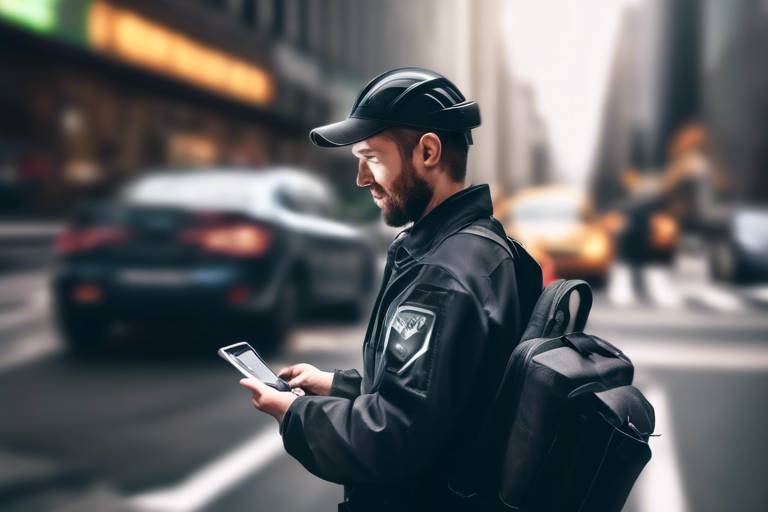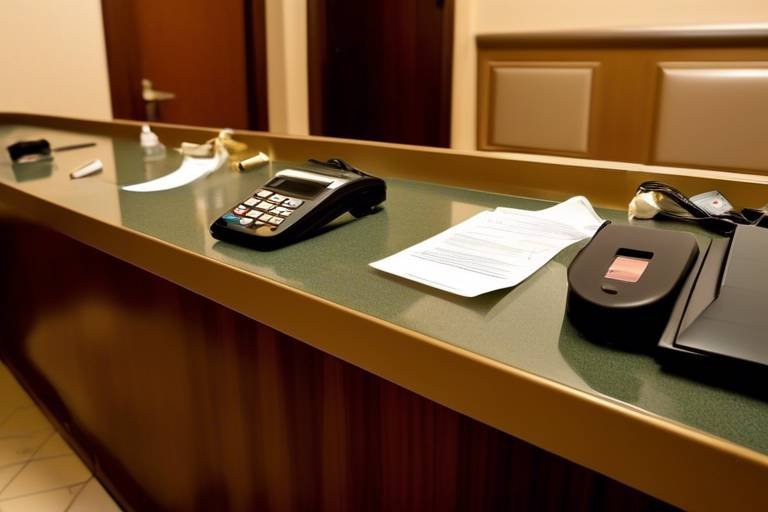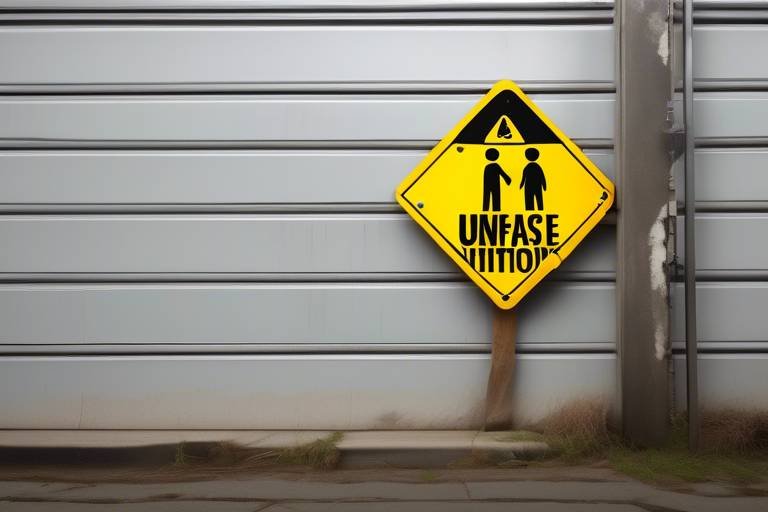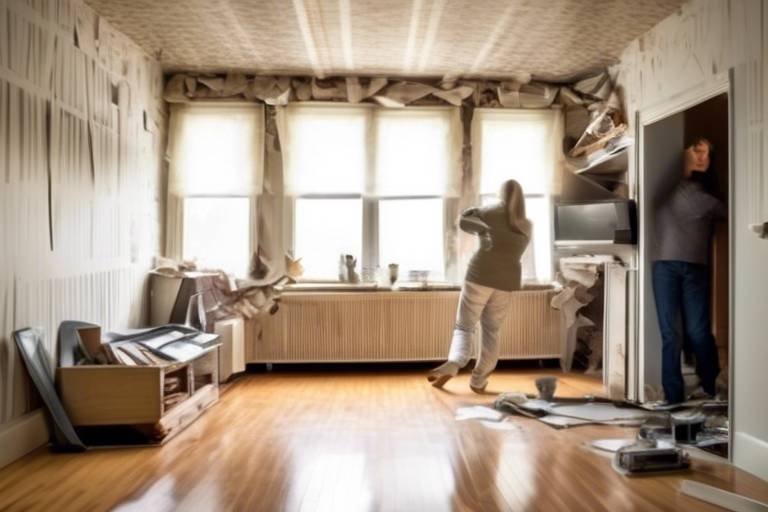Staying Safe in a World of Political Unrest
In today's world, the landscape of political stability can often seem like a rollercoaster ride—full of unexpected twists, turns, and sometimes, abrupt drops. The reality is that political unrest can erupt at any moment, leaving many feeling vulnerable and uncertain. But fear not! With the right strategies and a proactive mindset, you can navigate these turbulent times while keeping yourself and your loved ones safe. Think of it as preparing for a storm; you wouldn’t wait for the rain to start before grabbing your umbrella, right? Instead, you would make sure you have everything you need to weather the storm comfortably.
Understanding the nature of political unrest is crucial. It’s not just about the headlines you see on the news; it’s about recognizing the underlying causes—be it economic hardship, social injustice, or governmental changes. Each of these factors can create a ripple effect, leading to protests, riots, or even civil disobedience. By staying informed and aware, you can better anticipate potential risks and make informed decisions about your safety and well-being.
Preparation is your best ally in times of uncertainty. Imagine you’re a scout—always prepared and ready for anything that comes your way. Creating an emergency kit tailored to your needs is a great first step. This kit should include essential supplies such as:
- Non-perishable food: Think canned goods, energy bars, and dried fruits.
- Water: Aim for at least one gallon per person per day for three days.
- First aid supplies: Band-aids, antiseptics, and any necessary medications.
- Communication tools: Battery-operated radios and backup chargers for your devices.
Additionally, establishing a communication plan with your family and friends is vital. This ensures that everyone knows how to reach each other during unrest, fostering a sense of security and coordination. Just like a well-rehearsed dance routine, knowing your steps can make all the difference in a chaotic situation.
Identifying safe locations within your community can also provide a refuge during disturbances. Think about places like community centers, libraries, or even friends’ houses. Knowing how to get there quickly can be your lifeline when unrest occurs. It’s like having a secret escape route planned in advance, ensuring you’re never caught off guard.
Staying informed is equally important. Reliable news sources and community alerts can be your eyes and ears, keeping you updated on local and global events. In a world where misinformation spreads like wildfire, being discerning about where you get your information can mean the difference between panic and preparedness.
Lastly, engaging with community organizations can bolster your safety. By participating in neighborhood watch programs or building relationships with local support networks, you create a safety net for yourself and your family. Just like a spider weaving its web, the stronger your connections, the more secure you’ll feel. These collective efforts not only enhance safety but also foster a sense of belonging and shared responsibility among community members.
Q: What should I include in my emergency kit?
A: Your emergency kit should include non-perishable food, water, first aid supplies, communication tools, and any personal medications you may need.
Q: How can I stay informed during political unrest?
A: Follow reliable news sources, subscribe to community alerts, and engage with local organizations to stay updated on current events.
Q: What are some safe locations I should identify?
A: Consider community centers, libraries, or trusted friends' homes as potential safe havens during unrest.
Q: How can I engage with my community for safety?
A: Participate in neighborhood watch programs, attend local meetings, and build relationships with neighbors to create a supportive network.
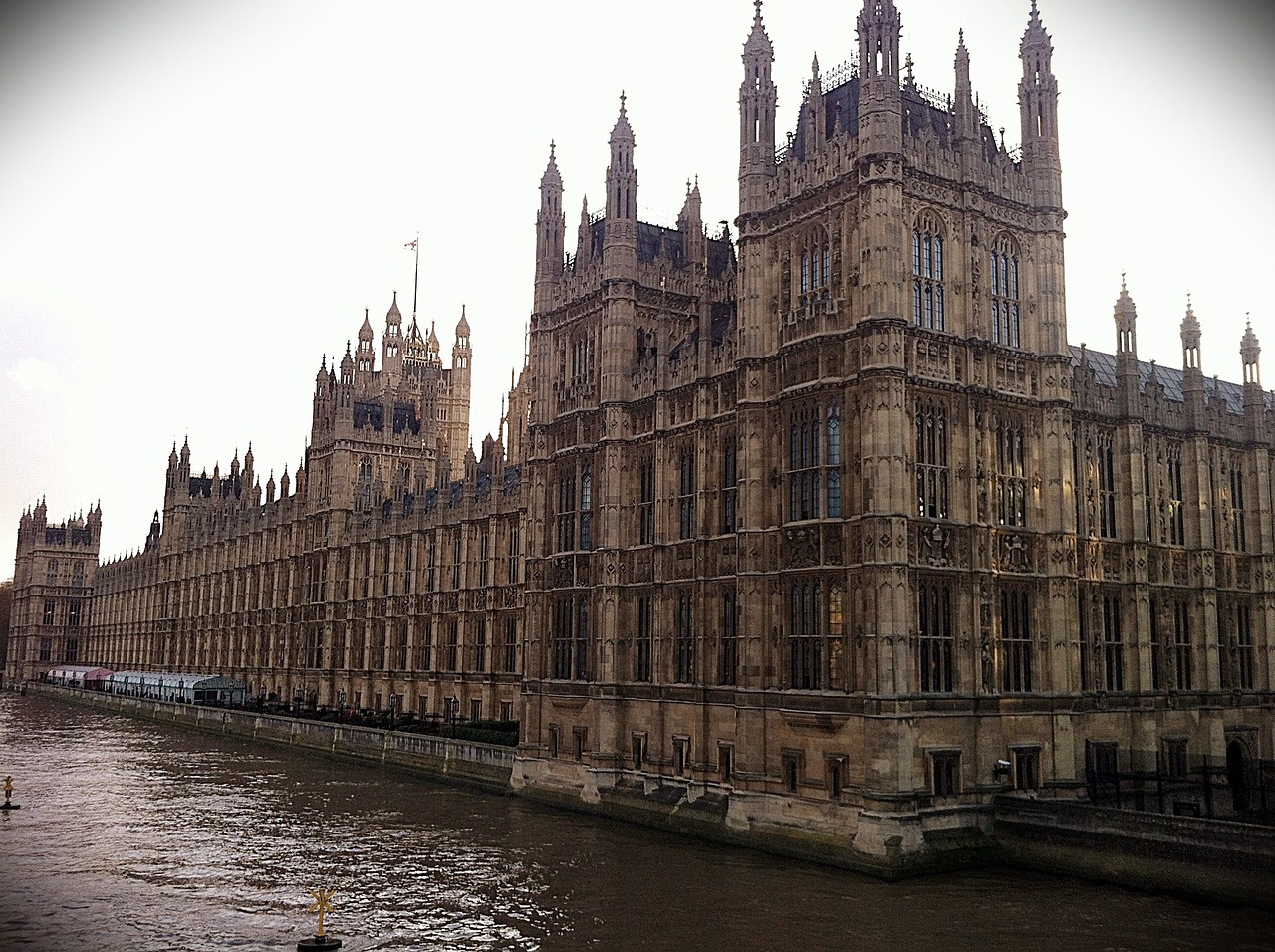
Understanding Political Unrest
To navigate safety during political unrest, it's essential to comprehend its causes, implications, and the environments in which it occurs, helping individuals better anticipate potential risks. Political unrest can arise from a myriad of factors, including economic instability, social injustice, governmental corruption, or even the desire for greater freedoms. Each of these elements can act as a catalyst, igniting the spark that leads to protests, riots, or civil disobedience. Understanding the root causes can help individuals not only grasp the situation but also prepare themselves mentally for the challenges ahead.
Moreover, the implications of political unrest can ripple through society like a stone thrown into a pond. When unrest occurs, it can lead to a breakdown in law and order, affecting everything from daily routines to the availability of essential services. For instance, during significant protests, streets may be blocked, businesses might close, and public transport could become unreliable. Recognizing these potential disruptions allows individuals to plan effectively, ensuring they have alternative routes or methods of communication in place.
It's also crucial to consider the environments in which political unrest typically unfolds. Urban areas often experience unrest more frequently than rural settings, primarily due to the concentration of population and resources. However, that doesn't mean rural areas are immune; community tensions can ignite in any locale. Being aware of the specific dynamics in your area can provide insight into the likelihood of unrest. For instance, if a local election is approaching or if there are ongoing debates about significant policy changes, these could serve as warning signs.
In addition to understanding the causes and implications, one must also stay attuned to the signs of escalating unrest. This could include:
- Increased protests or gatherings in public spaces
- Heightened police presence in certain areas
- Social media discussions that trend towards anger or frustration
Ultimately, knowledge is power. By educating ourselves about the factors that contribute to political unrest, we can better equip ourselves to handle the challenges that may arise. Whether it's having a plan in place or simply being aware of our surroundings, understanding the landscape of political unrest is the first step in ensuring our safety and well-being.
Q: What are the main causes of political unrest?
A: Political unrest can stem from various factors, including economic issues, social inequalities, governmental corruption, and the fight for civil rights.
Q: How can I stay safe during times of unrest?
A: Staying informed, having an emergency plan, and knowing safe locations within your community are crucial steps to ensure your safety.
Q: What should I include in my emergency kit?
A: Essential items include food, water, first aid supplies, flashlights, batteries, and communication devices.
Q: How can community engagement help during political unrest?
A: Engaging with community organizations fosters support networks and enhances collective safety measures.
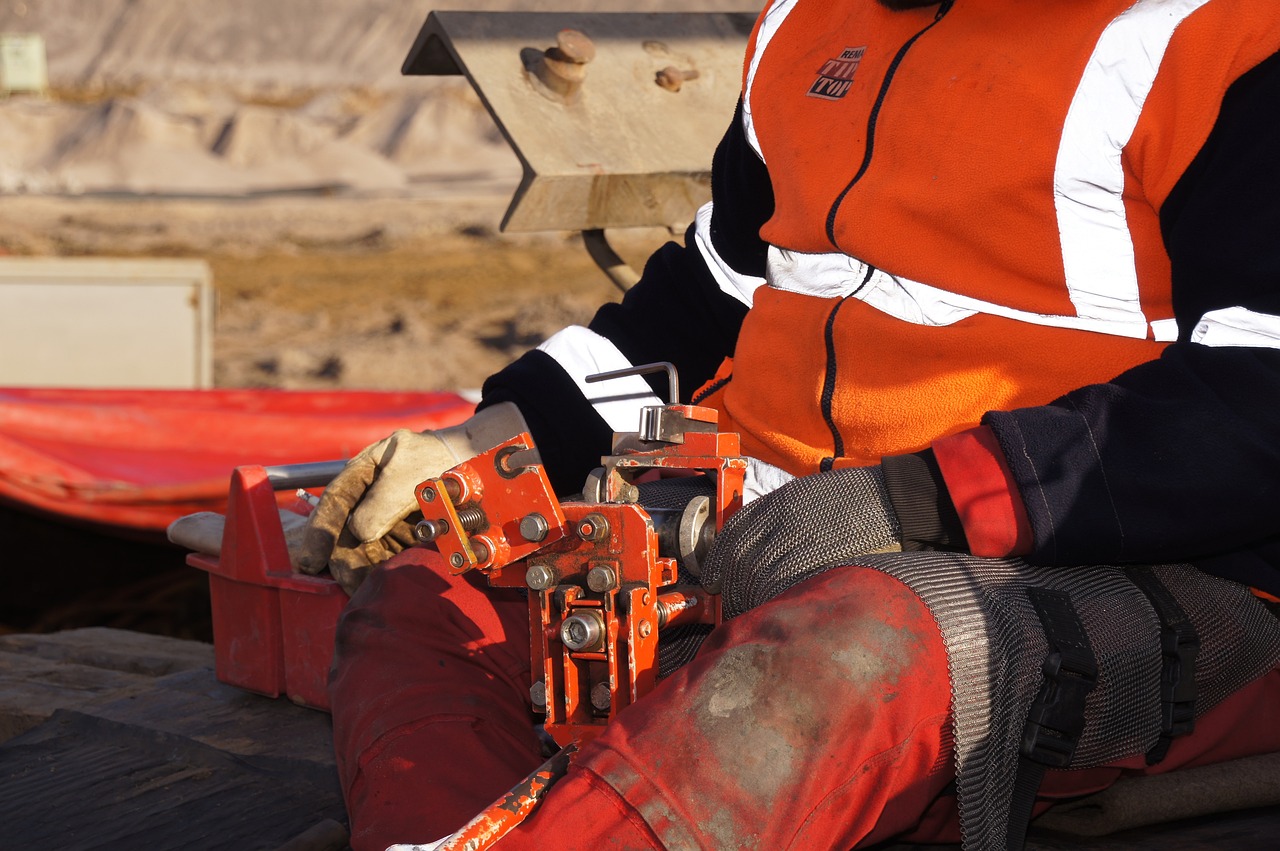
Preparing for Unrest
When it comes to staying safe during times of political unrest, preparation isn't just a good idea—it's a necessity. Think of it like packing for a trip; you wouldn’t want to find yourself in a foreign place without the essentials. Similarly, getting ready for potential disturbances means having a plan and the right tools at your disposal. This preparation can make all the difference in ensuring your safety and that of your loved ones.
One of the first steps in preparing for unrest is to create an emergency kit tailored to your personal needs. This kit should be stocked with essential supplies that will keep you and your family safe during a crisis. At a minimum, consider including the following items:
- Water: Aim for at least one gallon per person per day for three days.
- Non-perishable food: Think canned goods, granola bars, and dried fruits.
- First aid supplies: Band-aids, antiseptics, and any necessary medications.
- Flashlights and batteries: Power outages can happen, so be prepared.
- Communication tools: A battery-powered or hand-crank radio can keep you informed.
But gathering supplies is just one piece of the puzzle. Establishing a communication plan with your family and friends is equally important. This plan ensures that everyone knows how to reach one another during times of unrest. Consider designating a safe meeting place where everyone can go if things get chaotic. This could be a local park, a family member’s house, or any spot that feels secure to you. Make sure everyone is familiar with the plan and practices it, just like a fire drill!
Another crucial aspect of preparing for unrest is identifying safe locations within your community. These are places where you can seek refuge if things take a turn for the worse. Think about local community centers, libraries, or even the homes of trusted friends or relatives. Knowing these locations in advance can help you reach safety quickly when every second counts. It’s like having a mental map of your escape routes, ensuring that you're not left scrambling when panic sets in.
Lastly, staying informed is a vital part of your preparation. In today’s digital age, information is at our fingertips, but it’s essential to rely on reliable news sources and community alerts. Follow local news channels, subscribe to community alert systems, and stay connected with neighbors who might have their ears to the ground. Being informed not only helps you anticipate potential unrest but also equips you with the knowledge to make quick, informed decisions when it matters most.
In summary, preparing for unrest is all about being proactive. By creating an emergency kit, establishing a communication plan, identifying safe locations, and staying informed, you can significantly enhance your safety and peace of mind during turbulent times. Remember, it’s better to be over-prepared than underprepared. So, take the time now to ensure you and your loved ones are ready for whatever may come your way.
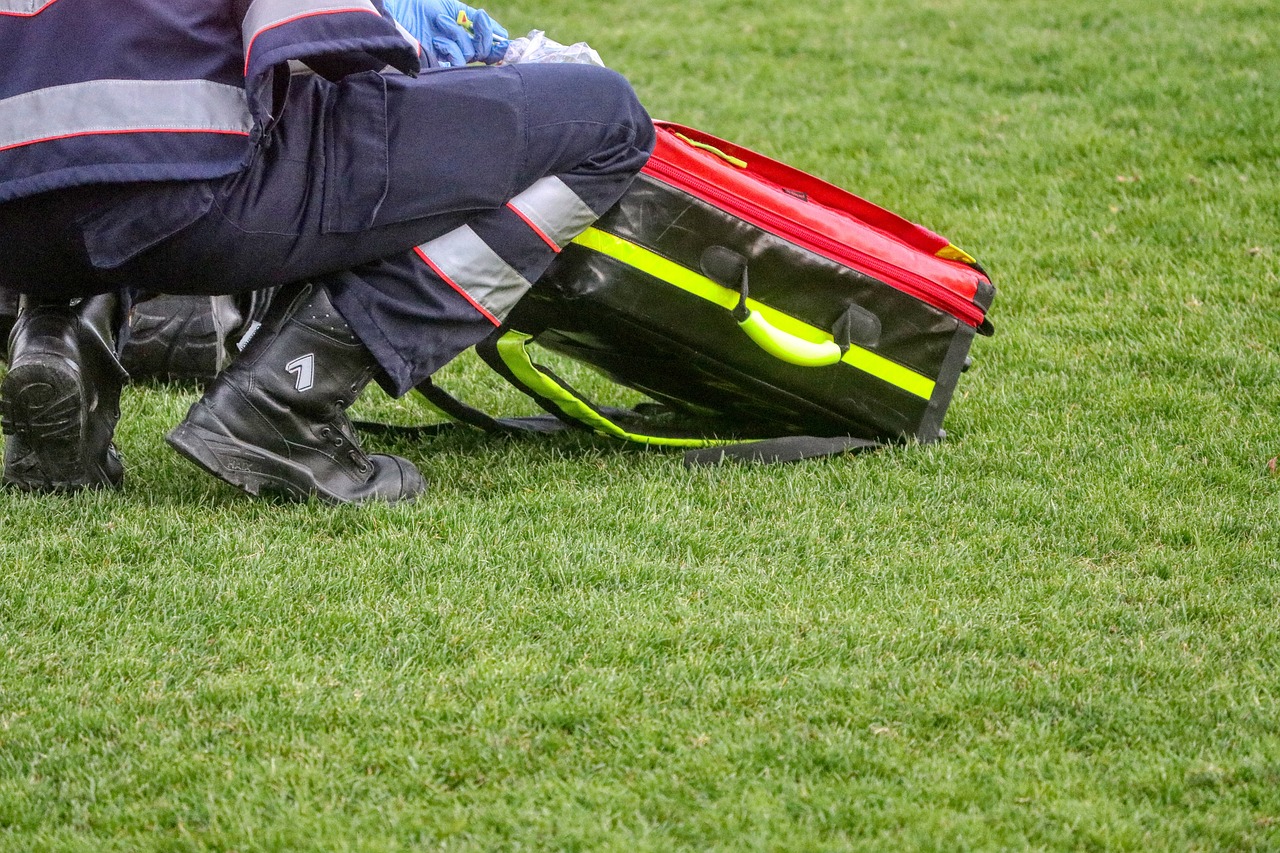
Emergency Kits
Creating an emergency kit tailored to your personal needs is not just a good idea; it’s essential for navigating through times of political unrest. Think of it as your safety net—something that will cushion the fall if things go sideways. You wouldn’t go on a road trip without packing essentials, right? The same logic applies here. An emergency kit should include a variety of supplies that will keep you and your loved ones safe and comfortable during any crisis.
First and foremost, your kit should contain non-perishable food items. This could be anything from canned goods to energy bars. The goal is to have enough sustenance to last at least three days, as this is often the time frame in which help may not be readily available. Alongside food, don't forget about water. A good rule of thumb is to have at least one gallon per person, per day, for at least three days. Water is life, and having a sufficient supply can make all the difference.
Next, consider including a first aid kit. This should be stocked with basic medical supplies like bandages, antiseptics, and any personal medications you might need. You never know when a minor injury could escalate into something more serious, especially in chaotic situations. Additionally, having a flashlight and extra batteries is crucial. Power outages are common during unrest, and being able to see in the dark can prevent accidents and keep you feeling secure.
Communication tools are another vital component of your emergency kit. A portable charger for your phone can be a lifesaver, allowing you to stay connected with family and friends when it matters most. You might also consider a battery-operated radio or a hand-crank radio, as these can keep you updated on the situation even if your power is out.
Lastly, it’s wise to include some personal documents in your kit. This could be copies of identification, insurance information, and any important medical records. In the event of an emergency, having these documents readily available can expedite the process of getting assistance.
To help you visualize what your emergency kit might look like, here’s a simple table summarizing the essential items:
| Item | Quantity |
|---|---|
| Non-perishable food | 3-day supply |
| Water | 1 gallon per person per day |
| First aid kit | 1 kit |
| Flashlight | 1 |
| Portable charger | 1 |
| Battery-operated radio | 1 |
| Personal documents | Copies as needed |
In conclusion, having a well-thought-out emergency kit is a proactive step toward ensuring your safety during times of political unrest. It’s not just about survival; it’s about maintaining a sense of normalcy and peace of mind when everything around you may seem chaotic. So, take the time to prepare your kit today—because when the unexpected happens, you’ll be glad you did!
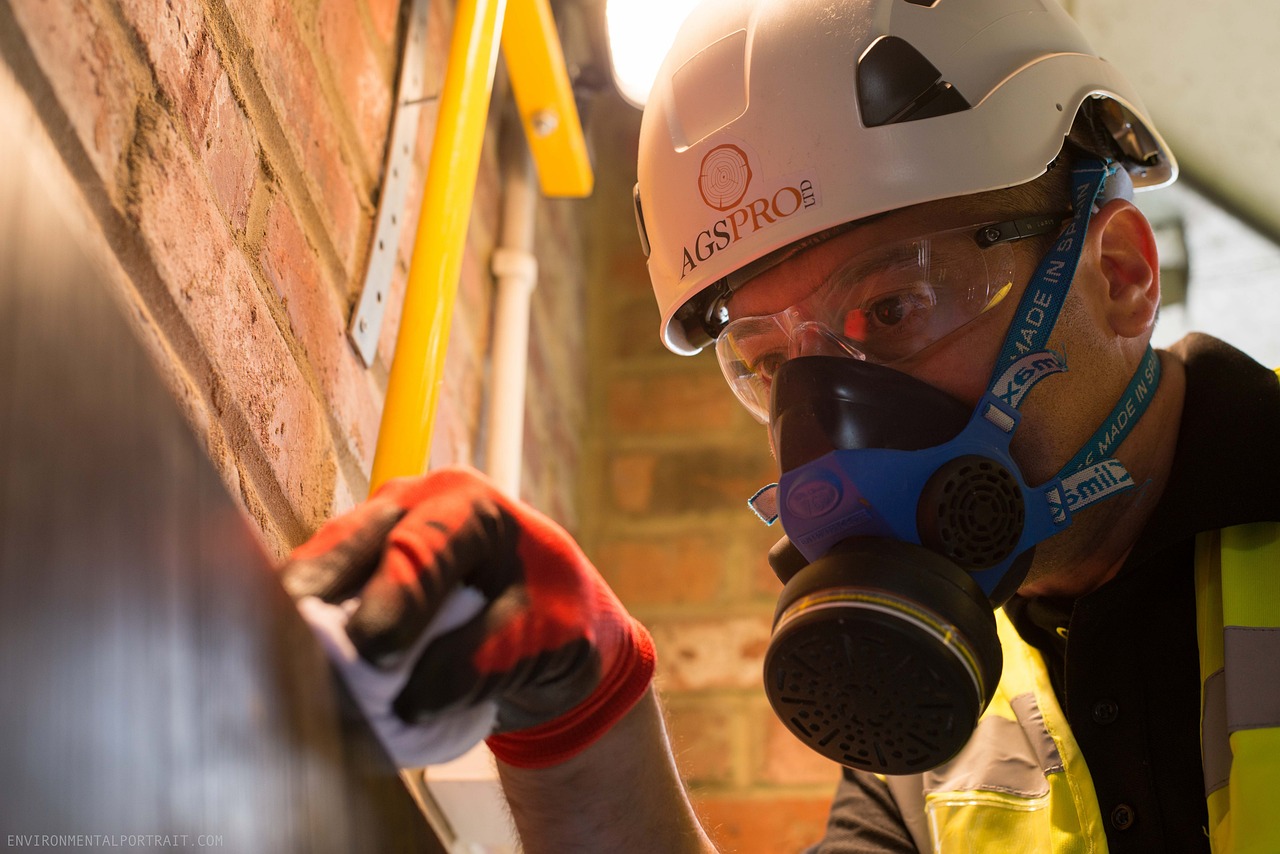
Communication Plans
When political unrest strikes, the chaos can leave you feeling isolated and uncertain. That's why having a solid communication plan is not just a good idea—it's essential. Imagine being in the middle of a storm without a map; you wouldn't know where to go or how to find safety. Similarly, without a communication plan, you risk losing contact with loved ones when it matters most. So, how do you create a plan that works for you and your family? Let's break it down.
First, it’s vital to establish a designated meeting point. This should be a safe location that everyone knows about—somewhere you can all regroup if communication lines go down. It could be a nearby park, a friend’s house, or even a community center. The key is to choose a spot that is easily accessible and safe from potential disturbances. Make sure everyone in your household is aware of this location and agrees on it.
Next, consider the various ways you can communicate during times of unrest. While cell phones are the most common means of communication, they can easily become unreliable due to network overload or power outages. Therefore, it’s wise to have alternative methods in place. For instance, you might want to establish a text messaging system or use social media to check in on one another. In addition, consider the following:
- Walkie-talkies: These can be a lifesaver, especially if phone lines are down. They have a limited range, but they can work wonders in localized situations.
- Signal Codes: Develop simple codes or phrases that everyone understands. For example, "Green light" could mean everything is okay, while "Red light" could indicate danger.
- Emergency Contacts: Create a list of important contacts outside your immediate circle, such as neighbors, friends, or local authorities. Having a network can provide additional support.
Moreover, regular check-ins are crucial. Make it a habit to touch base with family members weekly or bi-weekly, even when things are calm. This practice not only keeps everyone in the loop but also reinforces the importance of your communication plan. You can set specific times for these check-ins, ensuring that everyone knows when to expect a call or message.
Lastly, don’t forget to review and update your communication plan regularly. Just like your emergency kit, your plan needs to evolve as circumstances change. For example, if a family member moves away or if new technology becomes available, make sure to adjust your strategies accordingly. Consider holding family meetings to discuss any changes and to practice your communication methods. This way, you’ll all feel more prepared and confident when the time comes to put your plan into action.
In summary, a well-thought-out communication plan can make a world of difference during times of political unrest. It not only enhances your safety but also fosters a sense of connection and support among your loved ones. Remember, in a world filled with uncertainty, being prepared is your best defense.
Q: What should I include in my communication plan?
A: Your plan should include a designated meeting point, alternative communication methods, a list of emergency contacts, and regular check-in times.
Q: How often should I review my communication plan?
A: It's a good idea to review and update your plan at least once every six months or whenever significant changes occur in your family or community.
Q: What if my family members are in different locations?
A: Ensure everyone knows the communication plan and establish a method for reaching out to each other, whether through text, social media, or a designated contact outside of your immediate circle.

Safe Locations
In times of political unrest, knowing where to go can make all the difference between chaos and calm. Safe locations are not just random spots; they are places where you can find shelter, assistance, and a sense of security. Think of them as your personal havens, strategically chosen to keep you away from danger. But how do you identify these places? It's about being prepared and aware of your surroundings.
Firstly, local community centers often serve as excellent safe havens during disturbances. These centers are usually well-equipped and staffed with individuals who can provide support, whether it be food, medical assistance, or simply a place to gather your thoughts. Additionally, schools and libraries can be reliable options, as they are typically open to the public and can offer a safe space during tense situations.
Another consideration is the proximity of these locations to your home. In a crisis, time is of the essence. You want to ensure that your safe locations are easily accessible. An ideal approach is to map out your neighborhood and identify various safe spots. For example, you might want to consider:
- Community centers
- Public libraries
- Local parks
- Churches or places of worship
- Friends' or family members' homes
Furthermore, it’s wise to factor in the accessibility of these locations. Are they reachable on foot? Do they have clear routes that avoid potential trouble spots? Understanding the layout of your community can help you navigate quickly if you ever need to make a hasty exit. It’s also beneficial to visit these safe locations ahead of time, so you’re familiar with them when the need arises.
Finally, don’t forget to share your safe location plan with your family and friends. Open communication about where to go in case of unrest can create a sense of unity and preparedness. In moments of panic, knowing that everyone has a designated spot to regroup can alleviate stress and ensure that no one feels isolated or lost.
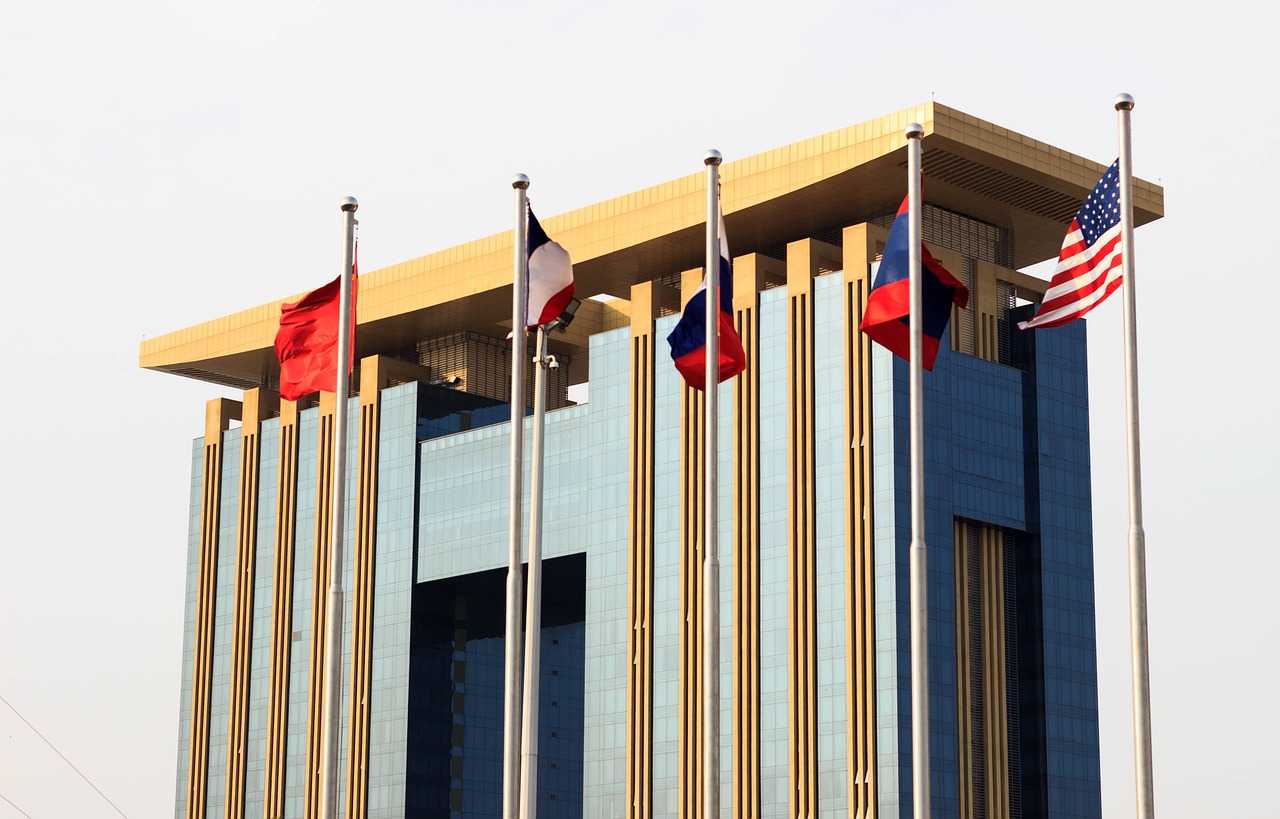
Staying Informed
In today's fast-paced world, staying informed is not just a luxury; it's a necessity, especially during times of political unrest. Imagine trying to navigate a stormy sea without a compass or map—how would you know where to steer? Similarly, being aware of the current political climate can help you chart a safe course through turbulent waters. It's essential to rely on reliable news sources and stay updated on local and global events that may impact your safety. But what does it mean to be truly informed?
First and foremost, it's crucial to discern between credible information and sensationalized news. In an age where misinformation spreads like wildfire, you need to be a savvy consumer of news. Look for outlets that have a reputation for thorough fact-checking and balanced reporting. This might mean tuning into established news organizations or subscribing to newsletters that prioritize accuracy over sensationalism.
Moreover, consider the power of community alerts. Many local governments and organizations provide real-time updates during emergencies or unrest. Signing up for these alerts can keep you in the loop and allow you to react quickly to changing situations. For instance, if a protest escalates or a curfew is imposed, you'll be among the first to know, giving you a critical advantage in ensuring your safety.
Another aspect of staying informed is engaging with your community. Local forums, social media groups, and neighborhood meetings can serve as platforms for sharing information and resources. When you connect with others, you not only gain insights into what's happening around you but also foster a sense of solidarity, which can be incredibly reassuring during uncertain times.
To further illustrate the importance of staying informed, let's take a look at a simple table that outlines different sources of information and their reliability:
| Source Type | Reliability Rating | Examples |
|---|---|---|
| National News Outlets | High | BBC, NPR, Reuters |
| Local News Stations | Medium | Your local TV or radio station |
| Social Media | Variable | Twitter, Facebook |
| Community Alerts | High | Local government websites, emergency services |
In summary, staying informed is a multifaceted endeavor that requires vigilance and discernment. By utilizing a mix of reputable news sources, community alerts, and local engagement, you can create a well-rounded understanding of the political landscape. This knowledge not only empowers you to make informed decisions but also enhances your overall safety during times of unrest. Remember, knowledge is your best ally—so keep your ears to the ground and your eyes wide open!
- What are the best sources for staying informed during political unrest? Focus on reputable national news outlets, local news stations, and official community alerts for the most accurate information.
- How can I differentiate between reliable news and misinformation? Always cross-check information with multiple credible sources and be wary of sensational headlines.
- Why is community engagement important for safety? Engaging with your community can provide support, resources, and timely information during crises.
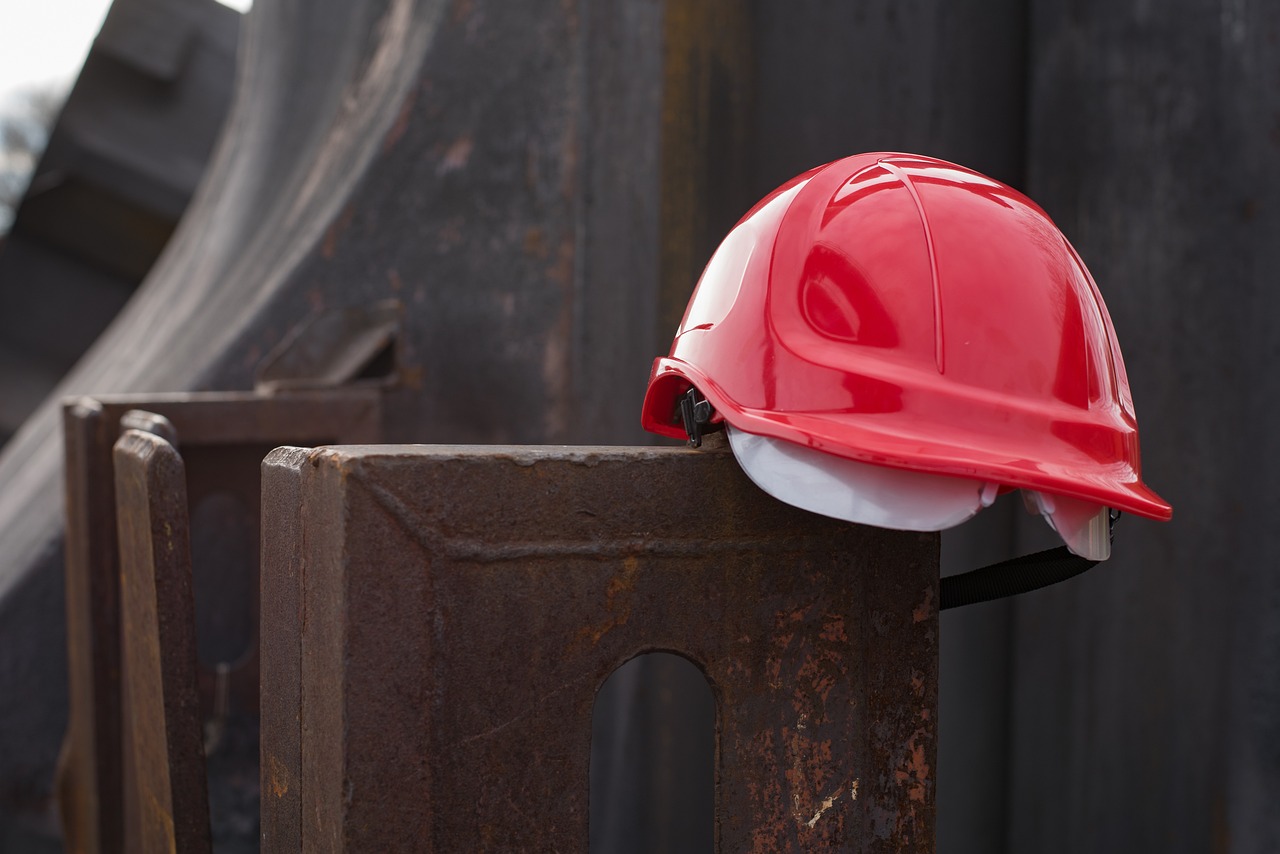
Community Engagement
Engaging with your community is not just a nice-to-have; it's a crucial element in ensuring personal safety during times of political unrest. Think of your community as a safety net—when we weave our lives together, we create a stronger fabric that can better withstand the storms of uncertainty. When unrest looms, it’s not just about looking out for yourself; it’s about fostering connections that can provide support, resources, and a sense of belonging. So, how do you get involved?
One of the most effective ways to enhance safety is through collaboration with local organizations. These groups often have established networks and resources that can be invaluable during crises. Whether it's a community center, a religious organization, or a local non-profit, these entities can provide not just physical safety but emotional support as well. They often organize events, meetings, and training sessions that can help you prepare for emergencies. By participating, you not only gain knowledge but also build relationships with others who share your concerns.
Moreover, consider becoming part of a neighborhood watch program. This initiative is all about collective vigilance; when people look out for one another, it creates a sense of security that can deter potential threats. Imagine walking down your street and knowing that your neighbors are keeping an eye out for each other. It’s like having a built-in alarm system made up of caring individuals. Not only does this foster a stronger community, but it also encourages open communication about safety concerns and strategies.
In addition to formal programs, informal gatherings can also serve as a platform for community engagement. Organizing block parties or community clean-up days can help strengthen relationships among residents. These events create opportunities for people to connect on a personal level, making it easier to reach out for help when needed. Just like a well-tended garden, relationships need nurturing to grow. The more you invest in your community, the more resilient it becomes.
To ensure that your community is prepared for any unrest, it’s essential to establish local support networks. These networks can be a lifeline during emergencies, offering everything from food and shelter to emotional support. When the chips are down, knowing who you can rely on can make all the difference. Reach out to your neighbors and discuss how you can support one another. Maybe you can create a group chat to share resources or organize a plan for checking in on each other during tough times.
In summary, community engagement is not just about safety; it’s about building a resilient network of support that can weather any storm. When we come together, we amplify our voices and increase our chances of navigating through unrest successfully. So, take that first step—reach out, get involved, and strengthen the ties that bind your community.
- Why is community engagement important during political unrest?
Community engagement enhances safety by fostering connections and support systems that can help individuals navigate crises more effectively. - How can I get involved in my community?
You can participate in local organizations, join neighborhood watch programs, or simply reach out to your neighbors to build relationships. - What are some practical ways to strengthen community ties?
Organizing events, participating in local initiatives, and creating communication networks are excellent ways to strengthen community ties. - What resources are available for community engagement?
Local community centers, non-profits, and online platforms often provide resources and information on how to get involved.

Neighborhood Watch Programs
Neighborhood watch programs are more than just a strategy for keeping an eye on the streets; they are a community-driven initiative that fosters a sense of safety and belonging among residents. Imagine living in a neighborhood where everyone looks out for each other, where a simple wave or smile can turn into a conversation about safety and security. Isn’t that a comforting thought? These programs encourage residents to be vigilant, to communicate openly, and to take proactive measures against crime and unrest.
One of the key benefits of participating in a neighborhood watch program is the strengthened sense of community. When neighbors come together, they create a network of support that extends beyond just safety. This collective vigilance not only deters potential wrongdoers but also builds relationships among residents. After all, knowing your neighbor can make a world of difference. You’re not just looking out for each other’s homes; you’re also sharing resources, information, and sometimes even meals. This camaraderie can be especially vital during times of political unrest when tensions may run high.
Moreover, neighborhood watch programs often provide training and resources to help residents identify suspicious activities and respond appropriately. This could include workshops on how to report incidents, recognizing signs of distress, or even self-defense classes. By equipping residents with knowledge and skills, these programs help to create a more informed and prepared community. Consider this: if you see something unusual, would you know how to report it? With the right training, you can feel confident in your ability to act.
To illustrate how effective these programs can be, let’s take a look at some statistics. According to various studies, neighborhoods with active watch programs report a significant decrease in crime rates. For instance, a community in a major city saw a 30% reduction in burglaries after establishing a watch program. This isn’t just a coincidence; it’s proof that when people come together, they can make a tangible difference in their environment. Here’s a quick breakdown of how neighborhood watch programs can enhance safety:
| Benefits | Description |
|---|---|
| Increased Vigilance | Neighbors actively monitor their surroundings, reducing opportunities for crime. |
| Community Cohesion | Residents build relationships, fostering trust and cooperation. |
| Resource Sharing | Access to shared information and tools enhances preparedness. |
| Training Opportunities | Residents learn how to respond to emergencies and suspicious activities. |
Establishing or joining a neighborhood watch program is relatively simple. It typically starts with a few interested residents who reach out to local law enforcement for guidance. From there, the group can organize meetings, create communication channels (like group chats or social media pages), and develop a plan of action. It’s about turning the idea of community into a reality, one neighborhood at a time.
In conclusion, neighborhood watch programs are an essential tool for enhancing safety during times of unrest. They not only provide a structured way for residents to look out for one another but also foster a spirit of cooperation and support that can be invaluable in challenging times. So, why not take that first step? Talk to your neighbors, reach out to local authorities, and see how you can contribute to a safer, more connected community.
- What is a neighborhood watch program? A neighborhood watch program is a community initiative where residents collaborate to monitor and report suspicious activities in their area.
- How can I start a neighborhood watch program? Start by gathering interested neighbors, contacting local law enforcement for support, and organizing regular meetings to discuss safety concerns.
- Are neighborhood watch programs effective? Yes, studies show that active neighborhood watch programs can significantly reduce crime rates and enhance community safety.
- What should I do if I see suspicious activity? Report it to local law enforcement immediately, and if you feel safe, document details like descriptions and license plate numbers.

Local Support Networks
In times of political unrest, the importance of cannot be overstated. These networks serve as a lifeline for individuals and families, providing not only essential resources but also a sense of community and belonging. Imagine being in a storm, and instead of facing it alone, you have a group of people standing by your side, ready to help. That’s the essence of local support networks.
Local support networks can take many forms, from informal groups of friends and neighbors to more structured organizations like community centers or local non-profits. They often focus on various aspects of support, including emotional assistance, practical resources, and information sharing. During times of unrest, these networks can be invaluable, offering a platform where individuals can voice their concerns, share vital information, and access resources that may otherwise be unavailable.
One of the key benefits of engaging with local support networks is the shared knowledge that comes from collective experience. When members of a community come together, they can share insights about safe routes to take, local resources for food and shelter, or even legal assistance if necessary. This pooling of knowledge can help everyone navigate the uncertainties of political unrest more effectively.
Moreover, local support networks often organize community events, workshops, and meetings that not only foster a sense of unity but also enhance preparedness. These gatherings can be a great opportunity to discuss strategies for staying safe, share personal experiences, and develop plans for action. By participating in these events, you not only gain valuable information but also strengthen the bonds within your community.
Here’s a quick look at some types of local support networks you might consider connecting with:
- Community Centers: Often serve as hubs for information and resources.
- Non-Profit Organizations: Provide various forms of assistance, including legal aid and emergency resources.
- Faith-Based Groups: Many religious organizations offer support and community engagement during times of crisis.
- Online Community Groups: Social media platforms can connect you with local networks that share real-time updates and resources.
Building relationships within these networks is crucial. It’s not just about receiving help; it’s about giving back as well. By contributing your skills or resources, you can create a more resilient community. For example, if you have medical training, offering first aid workshops can empower others and build trust within the group.
In conclusion, local support networks are more than just a safety net; they are a crucial component of community resilience. By engaging with these networks, you create a web of support that can significantly enhance your safety and well-being during times of political unrest. Remember, it’s not just about surviving; it’s about thriving together in challenging times.
Q: How can I find local support networks in my area?
A: You can start by checking community bulletin boards, local social media groups, or visiting community centers to learn about ongoing initiatives.
Q: What types of support can I expect from these networks?
A: Support can range from emotional assistance, sharing of resources, information on safety, to practical help like food distribution and shelter during crises.
Q: Can I start my own local support network?
A: Absolutely! Gather a group of like-minded individuals in your community and discuss common goals. You can organize meetings, share resources, and build a network that suits your community's needs.
Q: How can I contribute to existing support networks?
A: You can volunteer your time, share your skills, or provide resources. Every little bit helps to create a stronger, more resilient community.
Frequently Asked Questions
- What should I include in my emergency kit?
Your emergency kit should contain essential supplies tailored to your needs. This includes non-perishable food, water (at least one gallon per person per day), a first aid kit, flashlights, batteries, a multi-tool, and any necessary medications. Don't forget to add important documents like identification and insurance information!
- How can I stay informed during political unrest?
Staying informed is crucial for your safety. Follow reliable news sources, local government updates, and community alerts. Consider downloading news apps or subscribing to notifications that can provide real-time updates on local events. Engaging with community social media groups can also keep you in the loop.
- What is a communication plan, and why is it important?
A communication plan outlines how you and your family will stay in touch during emergencies. It’s important because it ensures everyone knows where to meet and how to reach each other if phone lines are down or if you are separated. Establish a designated meeting spot and share contact information with trusted friends and family.
- How can I identify safe locations in my community?
Identifying safe locations involves scouting out places that can provide refuge during disturbances. Look for community centers, schools, or public buildings that are known to be secure. Familiarize yourself with the routes to these locations, so you can reach them quickly if needed.
- What are neighborhood watch programs, and how do they work?
Neighborhood watch programs are community initiatives that promote safety through collective vigilance. Residents work together to monitor suspicious activities and report them to authorities. Participating in such programs fosters a sense of community, enhances safety, and encourages neighbors to look out for one another.
- How can local support networks help during crises?
Local support networks can provide essential resources and assistance during crises. They can connect you with food banks, shelters, and mental health services. Building relationships with these networks creates a safety net, ensuring that you and your family have access to help when you need it most.











